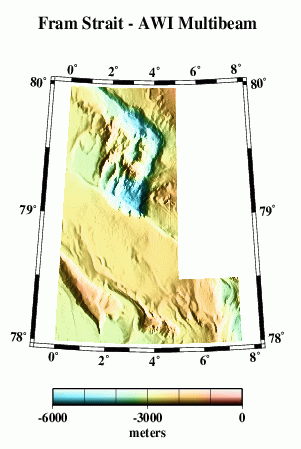Multibeam Swath Bathymetry - Fram Strait
Geophysical Analysis
Data
Grid Information:
- West = -0.825
- East = 8.265
- South = 77.965
- North = 80.026
- Grid Nodes: nx = 9090, ny = 2061
- Depth: Min = -5670.56 m, Max = -1172.92 m
GMT command line arguments:
- -R-0.825/8.265/77.965/80.026
- -I.001
Grid Files:
- .CDF (masked), (GZ, 35.7 MB)
Data Source:
- This geographic grid was provided by Martin Klenke at the Alfred Wegener Institute for Polar and Marine Research (AWI).
- Reference:
- Klenke, M. & Schenke, H.W.: A new bathymetric model for the central Fram Strait, Marine Geophysical Researches, 23(4), pp. 367-378, 2002.
Profile Comparisons
Here we compare profiles from swath bathymetry (A), satellite-derived ERS-1 gravity anomalies (D), and Arctic Gravity Project (ArcGP) data (E). The ERS-1 gravity profile (G) is similar to the ship gravity profile- both do not detect the shortest wavelength topography anomalies because of attenuation of signal due to the water depth. The ArcGP profile (G) (and ArcGP anomalies (E)) display a negative gravity anomaly where ERS-1 and ship gravity display a positive gravity anomaly. The difference between ERS-1 and ArcGP is shown in (F). South of about 79 N, the ArcGP field incorporated ERS-1 gravity data, which explains why the difference there is small. However north of 79 N there is a large (exceeding 50 mGal) difference between ArcGP, and both ERS-1 and ship gravity.
| A | 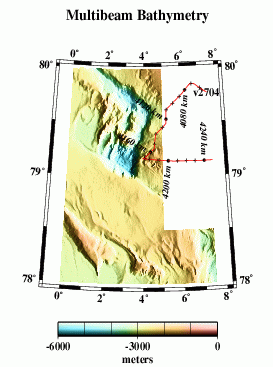 |
B | 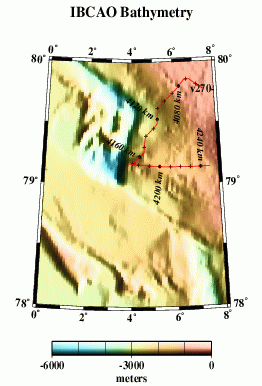 |
C | 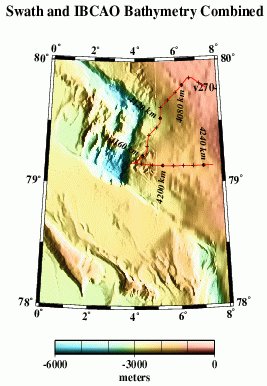 |
|---|
| D | 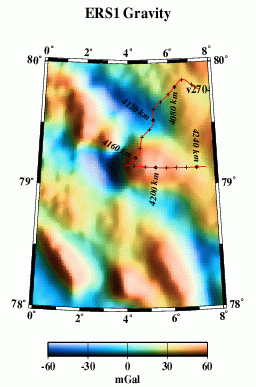 |
E | 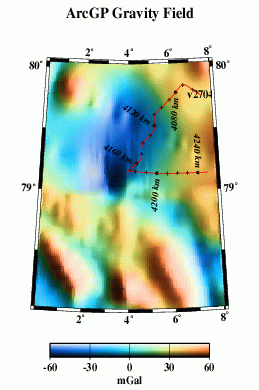 |
F | 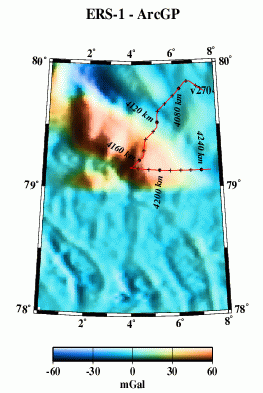 |
|---|
| G | 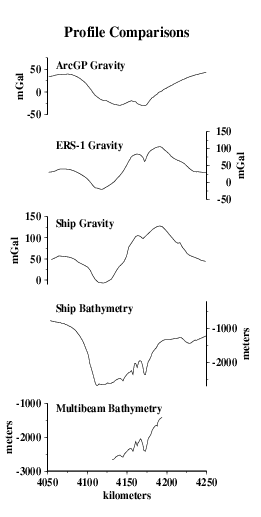 |
|---|
Grid Analysis
We compare the difference between International Bathymetric Chart of the Arctic Ocean (IBCAO) bathymetry (1 min. grid) and AWI swath bathymetry (.001 deg. grid) two ways, because the two are on grids of different spacing and thus may capture different length scales of bathymetric roughness.
For the lower-resolution analysis (H and I), multibeam data were averaged into corresponding 1 minute blocks, and IBCAO bathymetry was subtracted. For the higher-resolution analysis (J and K), bilinear interpolation was used to obtain IBCAO bathymetry values at each point on the swath bathymetry grid, then the IBCAO bathymetry was subtracted.
In both cases, we find the mean difference is ~ 52 m (the swath bathymetry data are systematically deeper); the difference is about 2% of the depth. An error like this is expected because of the uncertainties in whether or not data sets used in calibration have been corrected for the variable speed of sound in seawater, errors translating uncorrected sound speeds between nominal fathoms and nominal meters, etc.
The standard deviations about the mean are 52 m for the 1 arcmin averages and 54 m for the multibeam points.
Since 54² - 52² ~= 15²,
We may assume that the root-mean-square (rms) average roughness captured by the multibeam and not capturable on a 1 arcmin grid is about 15 m. The rms difference at longer scales, 54 m, is due to incomplete information in the IBCAO bathymetry grid.
| H | 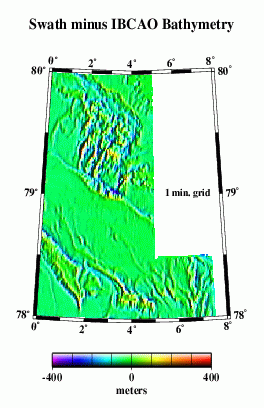 |
I | 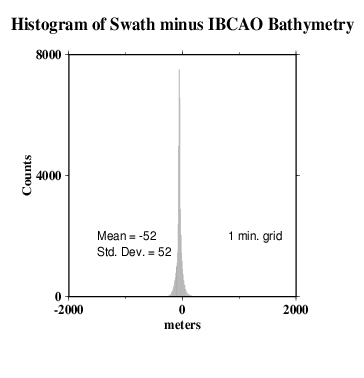 |
|---|
| J | 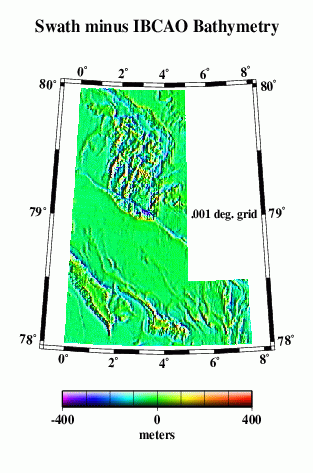 |
K | 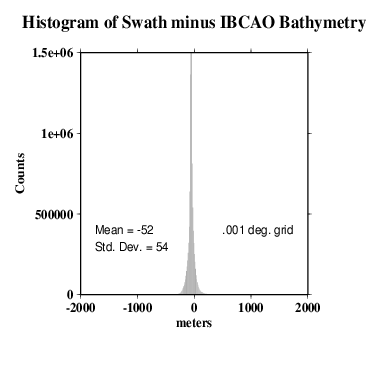 |
|---|
Eventually, we want to do a detailed cross-spectral analysis to determine how much of the actual multibeam bathymetry is captured in the altimeter gravity field. Here, we present a very simplified model. We take the combined bathymetry (C) and simply calculate a model gravity field, assuming that all the topography has the same density and is entirely uncompensated. This model (M) does not look much like the observed gravity (L), because our assumptions are too simple. The radially-averaged power spectra of the two (N) give some clue as to why.
At wavelengths longer than about 160 km, the simple model has too much power, because it does not include the effects of isostatic compensation of the topography. At shorter wavelengths the model also has more power than the altimetric gravity. Some of this is due to smoothing in the altimeter data necessary to remove noise. We don't know whether the simple model is realistic at wavelengths shorter than around 30 km.. We need high-quality ship gravity data to compare.
| L |  |
M | 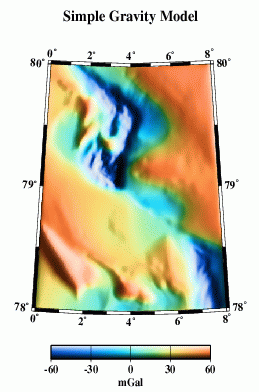 |
N | 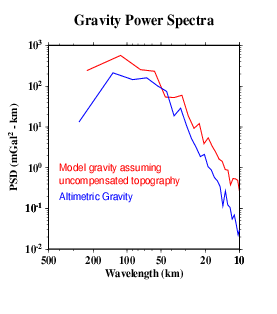 |
|---|

